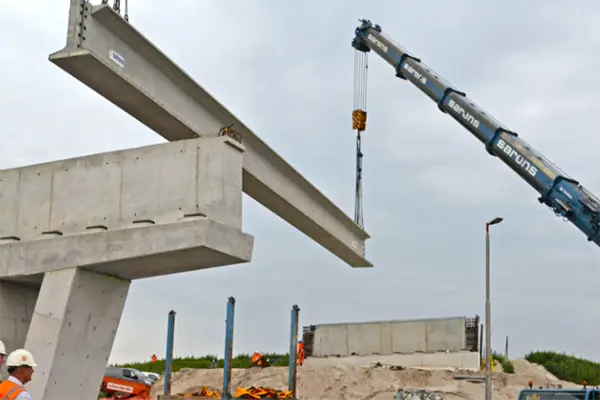When it comes to constructing bridges, buildings, or other large structures, choosing the right type of girders is essential. Metal girders and concrete girders are two popular options known for their strength and load-bearing capabilities. In this article, we will delve into a comprehensive comparison between metal girders and concrete girders, exploring their characteristics, advantages, and considerations to help you make an informed decision for your construction projects.
Understanding Metal Girders
Metal girders, often made of steel, are structural elements used to support and distribute the weight of a structure. They are typically I-shaped, resembling the letter “I” when viewed in cross-section. Metal girders offer high tensile strength, allowing them to withstand heavy loads and provide structural stability.
Understanding Concrete Girders
Concrete girders, on the other hand, are structural components made of reinforced concrete. They are designed to resist compression forces and provide support for the structure. Concrete girders are available in various shapes, such as rectangular, T-shaped, or box-shaped, depending on the specific structural requirements.

A Comparison between Metal Girders and Concrete Girders
- Strength and Load-Bearing Capacity:
- Metal Girders: Metal girders are renowned for their high strength-to-weight ratio. They offer exceptional tensile strength, making them ideal for structures that require long spans or need to support heavy loads. Metal girders can efficiently distribute the weight across their length, providing stability and structural integrity.
- Concrete Girders: Concrete girders excel in compressive strength. They are capable of withstanding substantial vertical loads, making them suitable for structures that require excellent vertical load-bearing capacity. Concrete girders are commonly used in bridge construction, where they can support the weight of the bridge deck and the traffic it carries.
- Versatility and Design Flexibility:
- Metal Girders: Metal girders offer greater design flexibility due to their ability to be fabricated into various shapes and sizes. They can be easily modified, welded, or bolted together to create complex structures. Metal girders are often favored for their adaptability and versatility in accommodating unique architectural designs and challenging construction requirements.
- Concrete Girders: Concrete girders provide versatility in terms of shape and size. They can be cast in different configurations, allowing for customized design solutions. Concrete girders can be molded to fit specific project needs, making them suitable for various applications, including bridges, parking garages, and industrial structures.
- Construction Considerations:
- Metal Girders: Metal girders offer advantages during the construction phase. They are lightweight, making them easier to transport and handle on-site. Metal girders can be fabricated off-site, reducing installation time and labor costs. However, corrosion can be a concern for metal girders, requiring appropriate protective measures to ensure their longevity.
- Concrete Girders: Concrete girders require extensive formwork during construction. This process involves creating temporary molds to shape the concrete into the desired girder configuration. The formwork can add time and complexity to the construction process. Additionally, concrete girders are heavier than metal girders, requiring careful planning for transportation and installation.
Conclusion
Metal girders and concrete girders both offer significant strengths and advantages in construction projects. Metal girders provide high tensile strength, design flexibility, and ease of installation. Concrete girders excel in compressive strength, versatility in shape, and suitability for vertical load-bearing applications. The choice between metal girders and concrete girders depends on specific project requirements, such as span length, load-bearing capacity, and architectural design considerations. Consulting with structural engineers and construction professionals is crucial to make an informed decision based on the unique needs of your project. By understanding the characteristics and benefits of metal girders and concrete girders, you can confidently select the most suitable option to ensure the strength, stability, and success of your construction endeavor.
Post time: Apr-03-2024




